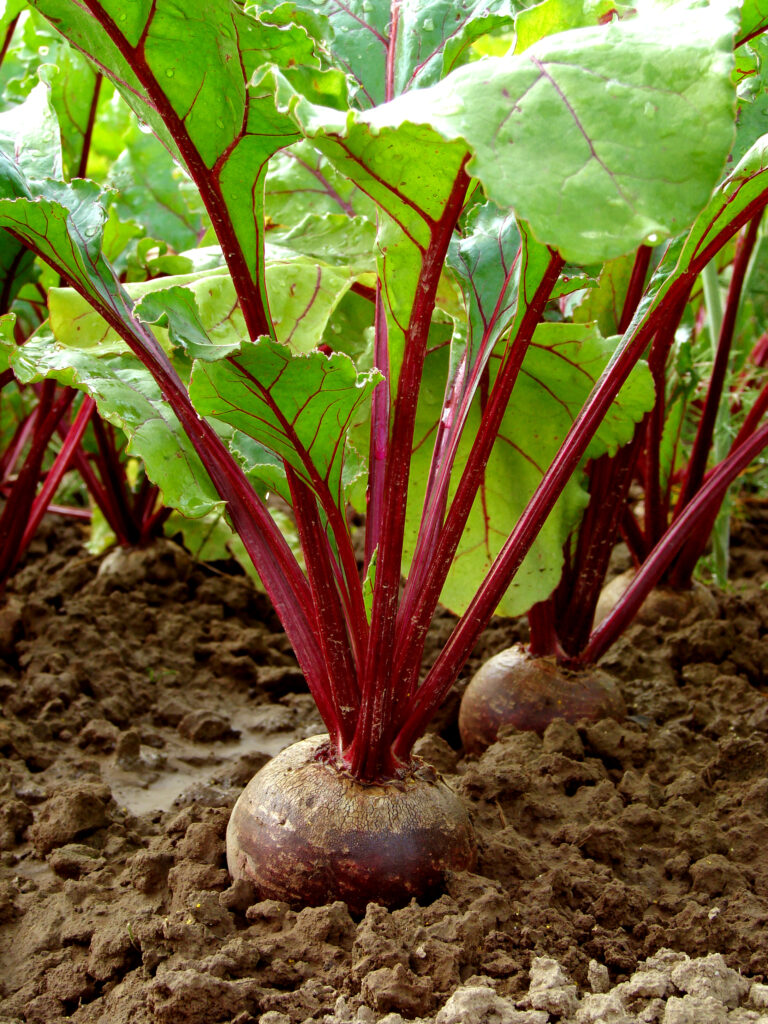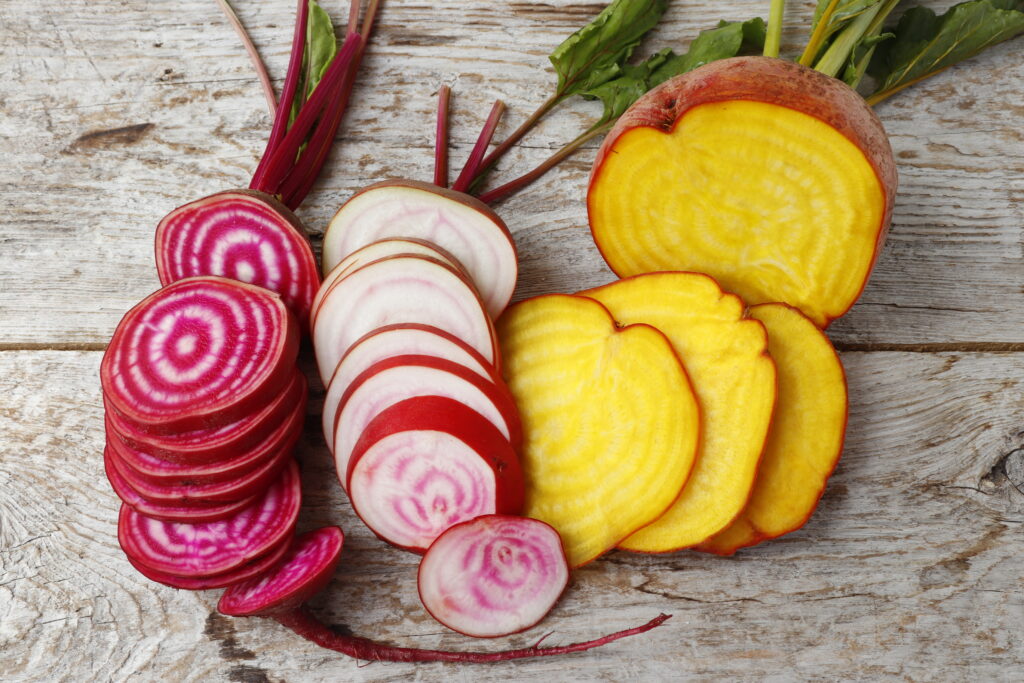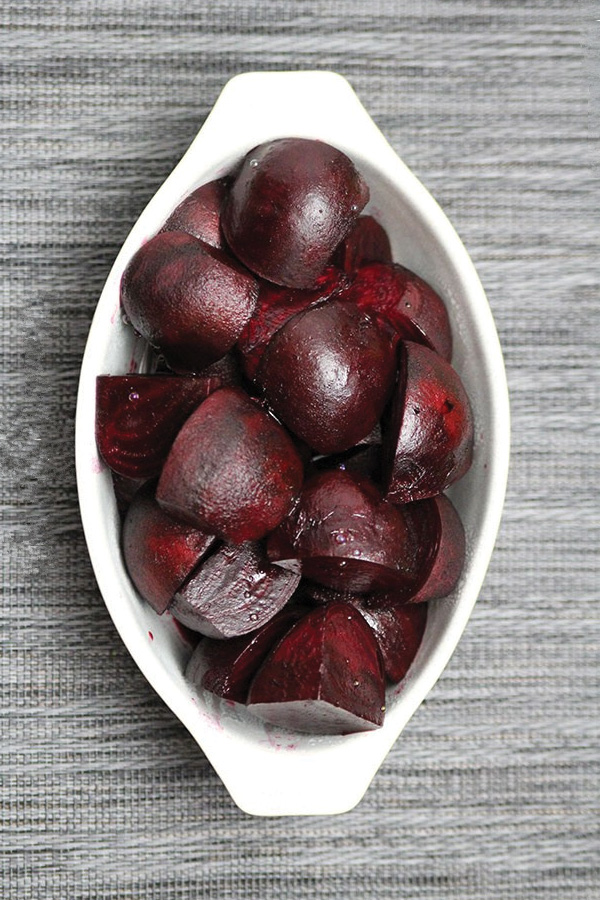Beets seem to be one of those veggies that people either love or hate. If you’re familiar with all of the nutritional value and health benefits associated with eating beets but can’t stomach the idea of eating this root vegetable because you find its characteristic earthy taste absolutely disgusting, there’s some science that may help explain how you’re feeling (and some ways to overcome it)!
Why Do Beets Taste Like Dirt?

The major contributor to the musty or earthy flavor—some would say beets taste like dirt—is a volatile organic compound called geosmin—specifically, a bicyclic alcohol known chemically as trans-1,10-dimethyltrans-9-decanol (for those of you who like a challenge!). As a side note, the name “geosmin” derives from the Ancient Greek ‘geo’ meaning earth and “osme” which means smell (makes perfect sense!). This chemical compound has a distinctive “earthy” or “musty” odor, which most people can easily smell. In fact, the human nose is incredibly sensitive to geosmin, with some individuals able to detect as little as 6 to 10 nanograms per liter. For those people, even trace amounts can make the taste of beets overwhelming.
A 2017 paper noted: “On the sensory level, very few individuals are immune to geosmin and although the intensity of the defect caused by this molecule decreases rapidly in the nose, a bad taste is very persistent in the mouth.” If you associate a dirt taste with beets, it may be because you are one of those individuals who is especially sensitive to the smell of geosmin, since taste and smell are so closely connected!
Where Else Does Geosmin Show Up?
In addition to beetroot, geosmin is also a contributor to the strong scent that occurs in the air when rain falls after a dry spell or when soil is disturbed. It is responsible for the muddy smell in many freshwater fish such as carp and catfish and is associated with similar “musty” odors in drinking water, dry beans, canned mushrooms, grapes, Swiss chard, sweet corn, and wine, to name a few. Despite the negative connotation with its smell, geosmin is not a public health concern and has no effect on our health (positive or negative)—it’s strictly a preference thing!
Do Beets Make Geosmin Themselves?
Geosmin is a known metabolite of several microorganisms including actinomycetes, blue-green algae, certain fungi, and the myxobacterium Nanocystis exedens. Although it’s not fully understood whether geosmin in beets comes from the plant itself or from soil microbes, recent experiments support the conclusion that beets are capable of endogenous synthesis of geosmin even in sterile environments. A 2014 study supports the idea that geosmin production may be largely endogenous and cultivar-specific but not entirely without influence from the growing environment. Researchers grew eight beet varieties, three related crops (mangel, sugar beet, and Swiss chard), and one carrot variety over two years in three different environments. The environments consisted of a greenhouse using autoclaved and non-autoclaved soil, as well as a field setting. Geosmin levels remained largely consistent across growing conditions, suggesting production is cultivar-specific rather than solely microbial. Another 2017 study demonstrated that geosmin concentration could be manipulated by selection in beets, which also supports the idea of endogenous production. Even though scientists aren’t 100% sure how it gets there, geosmin is present in beets—so what can we do about it? Although there are treatment methods in place to remove geosmin from liquids such as drinking water, there is no method for removal of geosmin from solids such as beets. But don’t despair—there are ways to help you successfully enjoy incorporating this nutritious veggie into your diet!
Do Some Beet Varieties Taste Better Than Others?

As previously mentioned, geosmin levels seem to be cultivar-specific, and breeding programs can produce cultivars with low geosmin levels that yield flavors more acceptable to some consumers. A 2003 paper found that the ‘Chioggia’ beet variety had significantly higher concentrations of geosmin as compared to the ‘Detroit Dark Red’ variety. In the 2014 study previously described, researchers also found geosmin levels were cultivar specific. For instance, ‘Bull’s Blood’, ‘Chioggia’, and sugar beet exhibited the highest geosmin levels, while the yellow table beet cultivar ‘Touchstone Gold’ produced the least amount of geosmin. The pigmentless table beet ‘Blankoma’ also produced lower amounts of this compound. The fact that varieties not containing red pigment have lower levels of geosmin could suggest these varieties have milder flavors which some people may prefer (though some of the health benefits associated with the red pigments in beets will be lacking). What does all this mean? If you’re not a fan of earthy tasting beets, choose varieties that are lower in geosmin!
How to Make Beets Taste Less Earthy
In addition to choosing beet varieties lower in geosmin (non-red options), analysis of mature beet roots revealed that peels contained six times the amount of geosmin compared to the bodies and cores of the veggie—so peeling beets is another way to help reduce the undesirable taste. Although peeling may lead to a decrease in antioxidant betalains you’re consuming, since they are also concentrated in the peel, some is better than none!

It has also been shown that reaction of geosmin with acid results in an odorless product (argosmin). Therefore, beet recipes that prepare or pair beets with something acidic such as lemon juice or vinegar could help eliminate this earthy flavor. Alternatively, you could try different ways of preparing raw beets to help mask the taste. For example, roasting beets helps bring out their sweetness, and pickled beets have strong flavors that may overpower the mustiness of beets—the same goes for fermenting beets. Lastly, you can combine beets with other fruits and veggies in soups or smoothies to help hide their overpowering taste. For example, cooked beets in soups like borscht or combined in a beet hummus or beet smoothie with fruit can further hide the earthy notes. For a beautiful presentation, try serving beets in a smoothie bowl with citrus and berries, or pair them with goat cheese in a salad to add tang and creaminess that offsets the offending taste of beets.
With all of these tips, I’m sure those of you who are predisposed to avoiding this veggie can “beet” your innate dislike of this nutrient-dense vegetable! With the right approach, even the “dirt flavor” can become a thing of the past!
cITATIONS
Expand to see all scientific references for this article.
Freidig AK, Goldman IL. Geosmin (2β,6α-dimethylbicyclo[4.4.0]decan-1β-ol) production associated with Beta vulgaris ssp. vulgaris is cultivar specific. J Agric Food Chem. 2014 Mar 5;62(9):2031-6. doi: 10.1021/jf4047336. Epub 2014 Feb 26.
Liato V, Aïder M. Geosmin as a source of the earthy-musty smell in fruits, vegetables and water: Origins, impact on foods and water, and review of the removing techniques. Chemosphere. 2017 Aug;181:9-18. doi: 10.1016/j.chemosphere.2017.04.039. Epub 2017 Apr 8.
Lu G, Edwards CG, Fellman JK, Mattinson DS, Navazio J. Biosynthetic origin of geosmin in red beets (Beta vulgaris L.). J Agric Food Chem. 2003 Feb 12;51(4):1026-9. doi: 10.1021/jf020905r. PMID: 12568567.
Maher L, Goldman I. Bidirectional Recurrent Half-Sib Family Selection for Geosmin Concentration in Table Beet. Crop Science. 2017. 57(5).








